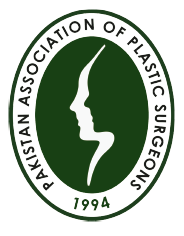
This condition can be present by birth or due to different causes like. Trauma, parasite infection, tumor, surgical intervention etc.
Symptoms:
Patient presents with swelling of the affected limb, skin changes, pain, difficulty in walking, and wearing clothes etc.
Lymphoscintigraphy (a radiolabeled colloid is injected in skin and traced) shows the blockage in lymphatic and helps in surgical intervention or MRI of affected limb.
.Conservative treatment 1
Physiotherapy is the mainstay of the treatment. Ideally patient should be admitted for physiotherapy at specialized center but as there are lack of
resources in our country so we advise physiotherapy under supervision along with. Compression stockings/wraps. Local skin care with emollients and moisturizing creams. Maintaining hygiene, Muscle pumping exercises, Massage therapy.
2. Surgical treatment
Depending on the stage of the disease.
It can be physiologic type or destructive type.
Physiologic type involves lymphatic to venule bypass or lymph node transfer.
Destructive type involves direct excision of skin and subcutaneous tissue or liposuction.
The physiologic procedures can be done under local anesthesia or general anesthesia and it can be a daycare procedure or may need admission for 1-2 days at least. For destructive type of procedures patient need to be admitted for at least 1-3 days for post operative monitoring and usually done under general anesthesia.
Lymphedema is not a curable condition and patient has to live with it while continuing conservative management. Surgical treatment just debulk the swollen limb. Newer techniques like lymphatic channel to venule bypass and lymph node transfer added some benefits in the management of lymphedema but might be not so effective in the long term.
Outcome depends on the location and size of the fistula and status of surrounding tissues. Although most of the fistula closes after the surgery, some may recur and requires further surgery.
It usually takes less time than the original hypospadias repair and completes in less than an hour.
The surgery is performed under general anaesthesia and as a day care procedure. Patient can go home the same day after recovery from anaesthesia.
The most common complication is recurrence of the defect. Others complications include infection, difficulty in urination and stricture formation


